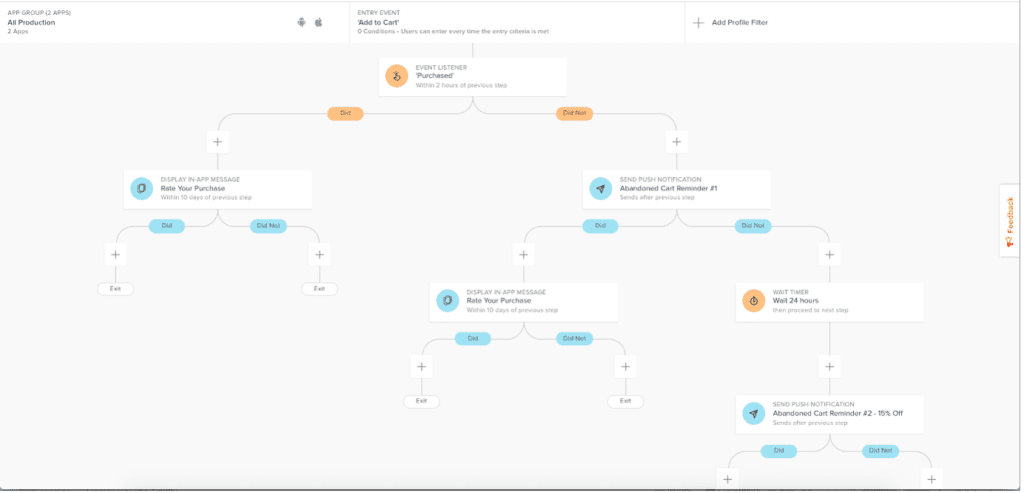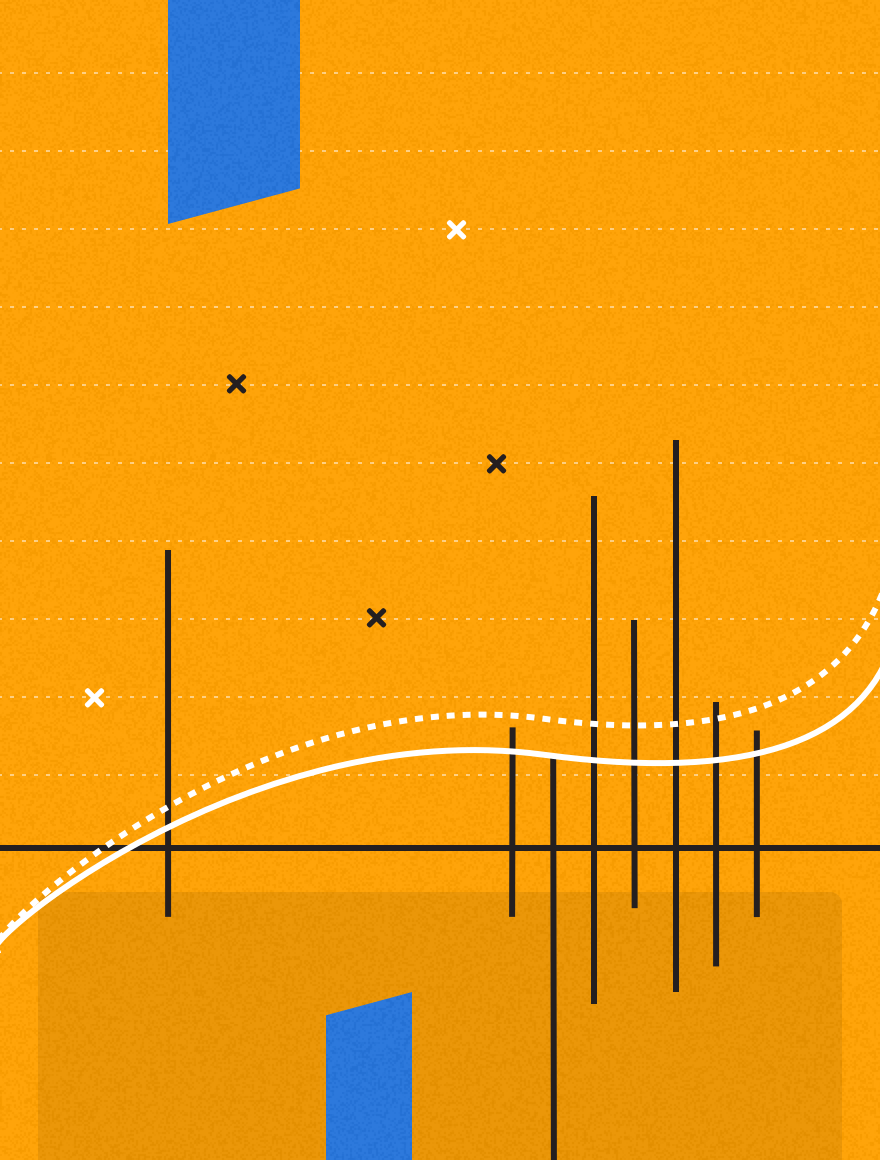Mobile commerce has been around for years, however, as COVID-19 turned the world upside down overnight, consumers are turning to their mobile phones more than ever before. UK shoppers spent 82 billion hours in shopping apps in 2020, while globally, it’s estimated that 79% of those who use smartphones (approximately 6.37 billion people) have made on online purchase through it in the last six months.
These trends are here to stay and will cause significant challenges for marketers who fail to keep up. Upland BlueVenn’s Digital Divide Whitepaper examined the recent shift in consumer behaviors to see how well marketers are adapting to these changes. The whitepaper, which surveyed 4,000 consumers and 500 marketers, all based in the UK and the US, painted an interesting picture regarding the growing digital divide between marketers and consumers, and the increase in mobile usage.
The dramatic rise in mobile app usage
The research found that 32% of UK consumers and 41% of US consumers use mobile apps to interact with brands, with products/services including clothing, homeware, and sporting equipment; insurance; financial; holiday and leisure; and TV, movies, and entertainment, all attracting a high number of consumers via mobile apps. Across all sectors, US consumers were more likely to use a mobile app to browse/shop that product/service than their UK counterparts, representing a huge opportunity for US marketers.
Interestingly, when asked whether they agreed that they had considerably increased the amount they shop on their mobile phone over the last year, 61% of US consumers agreed (32% of which strongly agreed). The figure dropped to 40% for UK consumers. This is backed up by research showing that between November 1 to December 9, 2020, US shoppers spent over $53.2 billion on their mobiles, up 55% on the previous year, making 2020 the biggest mobile shopping year ever.
The breakdown of US consumers who prefer an app over a browser also paints a promising picture for mobile app marketers, as 47% of US shoppers prefer to use a brand’s app more than its website. 14% had no preference, and 39% preferred to use a website over an app.
However, for mobile app marketers wanting to increase their number of users, there are a few factors that can help pull your consumers away from the browser and on to your app.
56% of US consumers said that a better user experience on a mobile app would encourage them to use it over a web browser, 33% said a more personalized experience on a mobile app would encourage them to use it over a web browser, and 58% said that incentives such as a discount on their purchase would encourage them to download and use a brand’s app to shop rather than shopping via its website. For UK consumers, the figures were slightly less at 34%, 16% and 41% respectively, but still present opportunities for marketers.
How can marketers make the most of their mobile app marketing?
Marketers are clearly aware of the rise in mobile app usage, with BlueVenn’s research showing that 56% of UK marketers and 66% of US marketers are actively using mobile apps to interact with their customers. An additional 32% (UK and US) are not actively using them but are planning to in future. For these marketers, the sooner they adopt mobile app marketing, the better, as it’s predicted that time spent in shopping apps will increase by 40% by 2025.
However, as mobile apps become increasingly saturated, delivering an experience that your customers will remember and enjoy can be difficult. To optimize your mobile app, there are three key areas you need to consider – personalization, analytics, and real-time interaction.
Personalization
Proving to your customers that you know them is crucial to earning their loyalty, so you need to make sure you deliver personalized customer experiences. After all, 58% of US consumers said that lack of personalized experience would stop them from buying a product or service online. This raises to 62% for products not tailored to their needs. Furthermore, 44% of US consumers said that a brand understanding their taste and recommending them the product/service they want/need without asking would encourage them to continue using a brand’s product or service.
Analytics
Delivering the personalized experiences discussed above is impossible without analytics. To achieve this, you need to get to know your customers on a deeper level, see what works and why, and use these insights to strengthen your brand experience. According to BlueVenn’s marketers’ results, only 32% of US marketers use mobile app data to refine campaign audiences/customer segments and to inform wider business decisions. This shows a clear gap in their process, as they waste a significant amount of valuable data that could be used to optimize their app.
Real-time interaction
People live their lives on digital devices, with the average person spending approximately 6 hours a day on their devices. For the younger age group (16-24), this increases to 7.4 hours, and decreases to 4.4 hours for those aged 55-64.
With people spending most of their awake hours attached to a device, this presents marketers with the perfect opportunity to interact with them in real-time, regardless of which stage of the customer journey they’re at. This is particularly useful when it comes to cart abandonment.
As part of their research, BlueVenn asked consumers how strong their intention was to buy a product that they add to an online cart, but don’t purchase immediately. 11% of UK consumers said it was ‘very strong’, however this nearly tripled to 31% for US consumers. Add to this the 54% (UK) and 34% (US) who said it was quite strong, that’s a staggering 65% of consumers who intend to purchase a product when they add it to their cart.
So, with mobile app marketing, if your customer adds a product to their cart, but exits the app without completing the purchase, you can trigger a personalized, real-time app push notification or inbox message reminding them to complete their purchase. This is just one of the ways mobile app marketing can help you deliver a personalized experience and increase your revenue.

Upland Localytics is a leading mobile app analytics and marketing platform that gives marketers the autonomy to craft personalized mobile app campaigns, intelligently optimized to deepen customer engagement, loyalty, and conversion.
Our app and web analytics, campaign reporting and churn and conversion predictions ensure you have a deeper understanding of your customers, while our detailed audience segmentation, triggered campaigns and optimized delivery features allow you to use the insights to deliver intelligent, personalized experiences. We also support each stage of the customer journey, so you can deliver the message in the most relevant way, be that via app push, web push, in-app messages, app inbox, or geofence messaging.
If you’d like to find out more about how Upland Localytics can help transform your mobile app marketing potential, request your personalized demo today.
